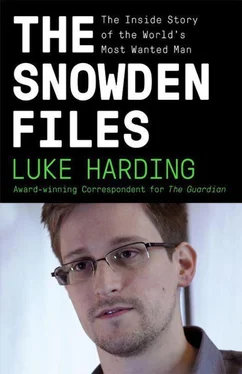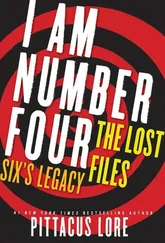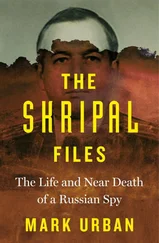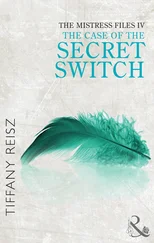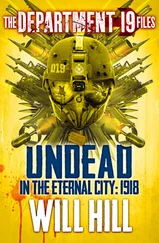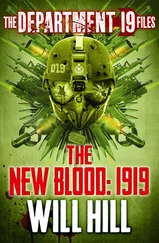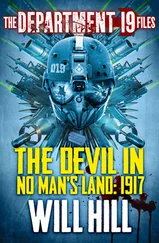The journalists feared that their paper’s continued reporting might come under some serious legal strain. ‘I thought at some point this story is going to get impossible for us,’ Rusbridger says. Some footwork was required.
In 2010 the Guardian had successfully partnered with the New York Times , and other international titles including Germany’s Der Spiegel , to report on the WikiLeaks leak of classified US diplomatic cables and war-logs.
There were similar advantages to collaboration now, particularly with US partners. The Guardian could take advantage of first-amendment protection. And, if necessary, offshore its entire reporting operation to New York where most stories were already being written under Gibson’s deft stewardship.
Rusbridger got in touch with Paul Steiger, founder of the independent news website ProPublica. It was a good fit. The non-profit ProPublica had a reputation for rigour; its newsroom had won two Pulitzers. A small selection of edited documents was sent off to him, heavily encrypted, via FedEx. This simple low-tech method proved inconspicuous, and perfectly safe. ProPublica’s technology reporter Jeff Larson joined the bunker in London. A computer science graduate, Larson knew his stuff. Using diagrams, he could explain the NSA’s complex data-mining programs – no mean feat.
Rusbridger had been in dialogue with Jill Abramson, the executive editor of the New York Times . Rusbriger had known her predecessor Bill Keller, and was on friendly terms with Abramson. The conversation was a strange one. In theory the Times and the Guardian were rivals. The Guardian had, in effect, just carried out a major US land-grab, raiding deep into traditional Times territory by publishing a series of high-profile national security scoops. To its credit, the Times had followed up the NSA story and produced some notable work of its own.
Would the Times be prepared to partner with the Guardian on the Snowden files? Rusbridger told Abramson bluntly that this was extremely hot material. There were no guarantees the Times would ever be able to look at it. There would be strict conditions around their use. ‘The temperature [here in the UK] is rising,’ he said. As with the collaboration over Wikileaks, both sides could benefit from the deal: the Times got the thumb drive; the Guardian got the first amendment. Abramson agreed.
What would Snowden make of this arrangement? It was unlikely he would be pleased. Snowden had repeatedly inveighed against the New York Times . The paper, he felt, was perfidious, too close to US power.
The alternative, however, was worse. The Guardian was in a tight spot; at any moment police could charge up the stairs and seize Snowden’s material. Inevitably, experts would then carry out detailed forensic tests on the hard drive. The result could conceivably strengthen the ongoing US criminal investigation against Snowden, their source.
Two weeks passed, with the Guardian continuing to publish. For those in the bunker it was a demanding and stressful period. They couldn’t talk to friends or colleagues, only to those in the circle of trust. Then on Friday 12 July, Heywood reappeared, accompanied by Craig Oliver, who was wearing a pink striped shirt. Their message was that the Guardian must hand the GCHQ files back; the mood in government seemed to be hardening, although scarcely more well-informed. ‘We are pretty aware of what you have got,’ said Sir Jeremy. ‘We believe you have about 30 to 40 documents. We are worried about their security.’
Rusbridger said: ‘You do realise there is a copy [of the documents] in America?’ Heywood: ‘We can do this nicely or we can go to law.’ Then Rusbridger suggested an apparent compromise: that GCHQ could send technical experts to the Guardian to advise staff how the material could be handled securely. And possibly, in due course, destroyed. He made it clear that the Guardian didn’t intend to hand the files over. ‘We are still working on them,’ he said. Heywood and Oliver said they would think about this over the weekend, but they wanted Rusbridger to reconsider his refusal to hand the stuff back.
Three evenings later, Rusbridger was having a quiet beer in the Crown, a Victorian pub in nearby Islington. A text arrived from Oliver, the premier’s press secretary. Had the editor set up a meeting with Oliver Robbins, Cameron’s deputy national security adviser?
‘JH [Heywood] is concerned you have not agreed the meeting he suggested.’
Rusbridger was nonplussed. He texted back: ‘About security measures?’
Oliver: ‘About handing the material back.’
Rusbridger: ‘I thought he suggested meeting about security measures?’
Oliver: ‘No. He is very clear. The meeting is about getting the material back.’
It appeared that over the weekend something had changed. Rusbridger told the press secretary there hadn’t been a deal to return the Snowden files.
Oliver was blunt: ‘You’ve had your fun. Now it’s time to hand the files back.’
Rusbridger replied: ‘We are obviously talking about different meetings. That’s not what we agreed. If you’ve changed your mind that’s fine.’
Oliver then went for the big stick: ‘If you won’t return it we will have to talk to “other people” this evening…’
The conversation left Rusbridger amazed. Since the first Snowden story six weeks earlier Downing Street had treated the leak non-urgently – often taking days to respond. It was bureaucratic delay verging on sloth. Now it wanted a resolution within hours. ‘We just sat up and thought “Oh my God”,’ one insider said. It was possible the security services had detected an imminent threat from an enemy power. Or the securocrats had grown exasperated. Or Cameron had given a languid order to deal with it.
The next morning, Robbins called. Aged 38, Robbins had enjoyed a sharp vertical rise – Oxford, the Treasury, principal private secretary to Tony Blair, director of intelligence in the Cabinet Office. Robbins announced it ‘was all over’. Ministers needed urgent assurances Snowden’s files had been ‘destroyed’. He said GCHQ technicians also wanted to inspect the files to ascertain their ‘journey’: to see if a third party had intercepted them.
Rusbridger repeated: ‘This doesn’t make sense. It’s in US hands. We will go on reporting from the US. You are going to lose any sense of control over the conditions. You’re not going to have this chat with US news organisations.’
Rusbridger then asked, ‘Are you saying explicitly, if we don’t do this you will close us down?’
‘I’m saying this,’ Robbins agreed.
That afternoon, Jill Abramson of the New York Times and her managing editor, Dean Baquet, slipped into the Guardian ’s London office.
The Guardian had 14 conditions, set out on a sheet of A4, for the collaboration.
They stipulated that both papers would work together on the material. Rusbridger knew the Times newsroom included reporters with deep expert knowledge of national security matters. ‘This guy is our source. I think you should treat him as your source,’ Rusbridger said. He added that neither Snowden nor Greenwald were exactly fans of the Times . British journalists would move in and work alongside their Times colleagues.
Abramson gave him a wry smile. She agreed to the conditions.
Later Abramson and Baquet arrived at Heathrow airport to fly home. Security officers pulled them to one side. Was this a random stop? Or were they looking for the GCHQ files? They didn’t find them. The documents had already been spirited across the Atlantic.
Читать дальше
